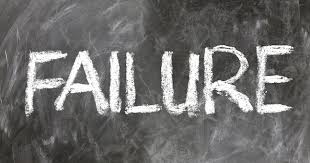I read an article from a very large consulting company entitled, “Have you made it safe to fail?” Frankly, it’s social psycho-babble. It’s the equivalent of saying, “everyone gets a trophy, regardless of whether they win or lose.” The article will draw eyeballs, but I think they miss the point, consequently much of the value around failure.
The authors do, correctly state, that failure is part of the learning process. Something which too many fail to recognize and execute. Too often, we tend to punish failure and we fail to understand what caused the failure, taking corrective action.
The authors, also, talk about how organizations can leverage approaches that reduce the likelihood of failure or the consequences of failing. Well duugghhh!!! We should never purposefully seek to fail. We should do everything to maximize our likelihood of success. We should understand the potential risks, and the consequences of failure. We must make sure those consequences are acceptable. At the same time, “acceptability, ” to some may mean losing everything.
The social psycho-babble around failure usually seeks to remove personal accountability for the consequences of failure. If failure is OK and safe, we will enable more people to take chances to fail.
Implicitly, however, making failure safe means we design for failure, not design for success. If there are no risks, if there are no consequences, then we are likely to be sloppy and careless in our execution. We are likely to do things, from which there is little to learn other than sloppiness in execution.
This article, as with most others, cites famous “failures.” Whether it was Edison inventing the light bulb, numerous entrepreneurs starting and failing, finally stumbling on a unicorn. But none of these famous examples of “failures,” did what they did because it was safe to fail. In fact, most of them recognized the consequences of failure may have been losing everything and having the courage to start again.
They understood and took personal accountability for the consequences of failure. They did everything they could to design and execute for success, knowing there was no safety net.
There should be no safety net for failure. There should be accountability, there should be consequences around failure. Some of those may be small, if the consequences and risks are small. Some may be large and only certain people will be prepared to accept that challenge.
What we miss in understanding failure is understanding resilience. We don’t want to make it safe to fail, we want to improve the resilience in dealing with failure.
Resilience is all about learning–even if those lessons are very painful. Resilience is about having the courage and personal drive to pick one’s self up, again, and keep trying.
We are better than this.

Dave, this was an interesting read, and I agree with your viewpoint. Making an environment “safe to fail” allows people to run their sales plans in a potentially sloppy manner, thinking they will be “forgiven” for not doing their job – this is unacceptable. I was recently asked to manage a sales team that was 2,000 miles away. At a high level, that’s possible, we all can work remote with the tools we have. However, the problem was that this is public sector, which is what I call a “geo-centric” sales process where being “in market” is crucial to staying relevant with the state and local agencies you are trying to do business with. Well, 5 months later, me and the CEO are calling this a “failure”. We need a local Director of Sales that can be a player-coach and in market to facilitate building relationships and coaching the sales team on a daily basis. Now, was it a failure. Yes. Am I being fired, absolutely not. We knew what the risks were, we put together a good plan 5 months ago with the intent of being successful. To your point, we built resiliency into the plan, and will now make the necessary changes and move on to be much more successful in the space.